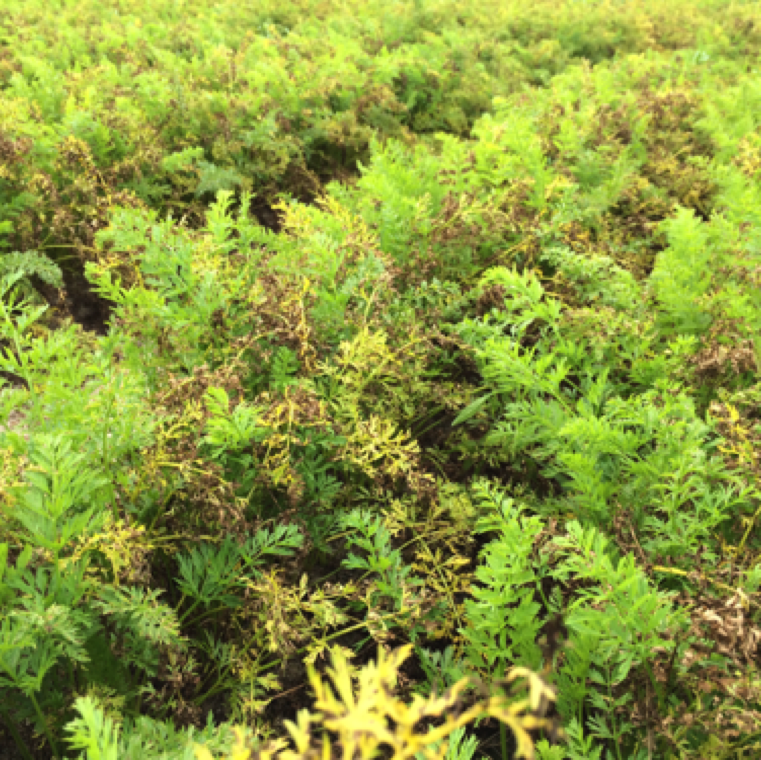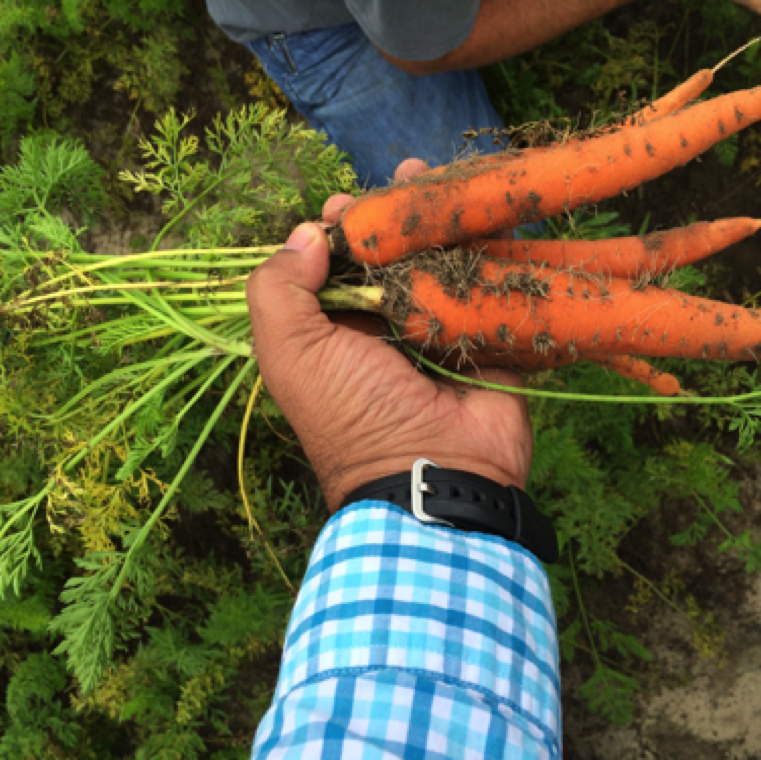


Alternaria leaf blight can cause major damage due to numerous leaf spots, yellowing and blighting of carrot leaves during active production mid-late season in Florida.
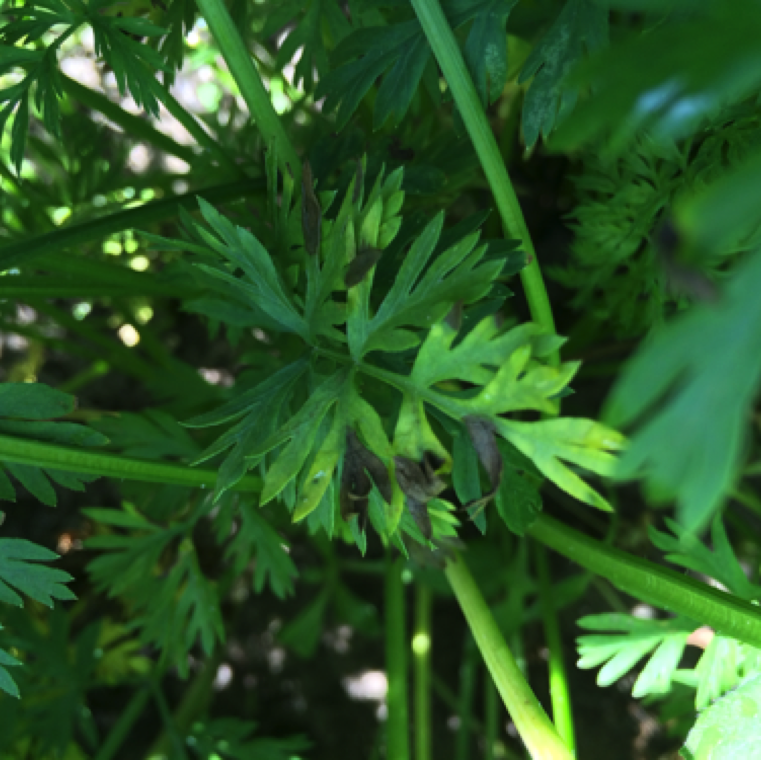
Alternaria leaf blight symptoms start as browning of inner sections of the leaves and/or tips of carrot leaves. The area around the lesions may have water-soaking appearance.
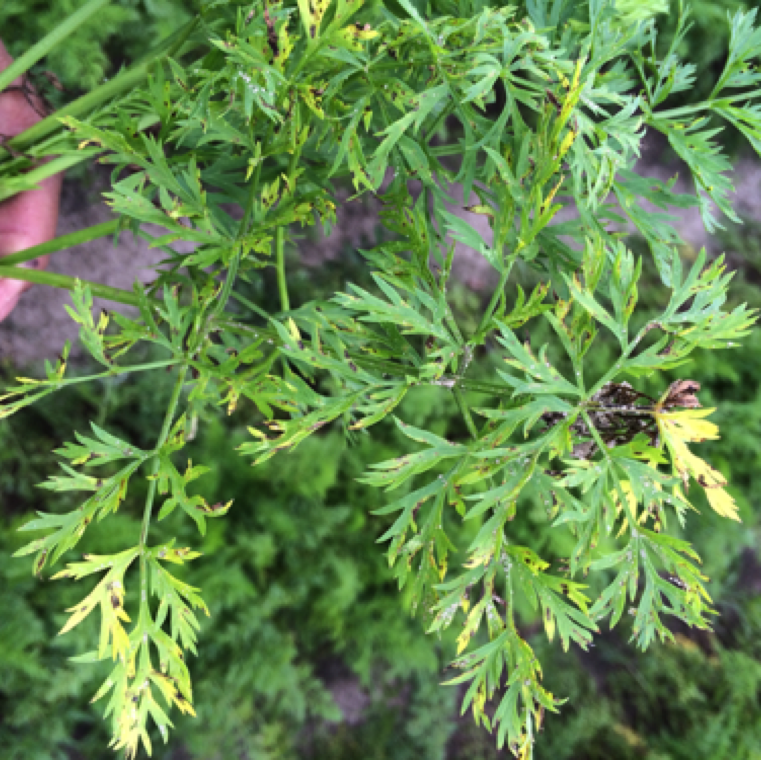
The leaf spots can be seen as small spots spots mostly with yellow halo, but in some cases larger spots that are not vein limited. Sections of plants may show signs of chlorosis.
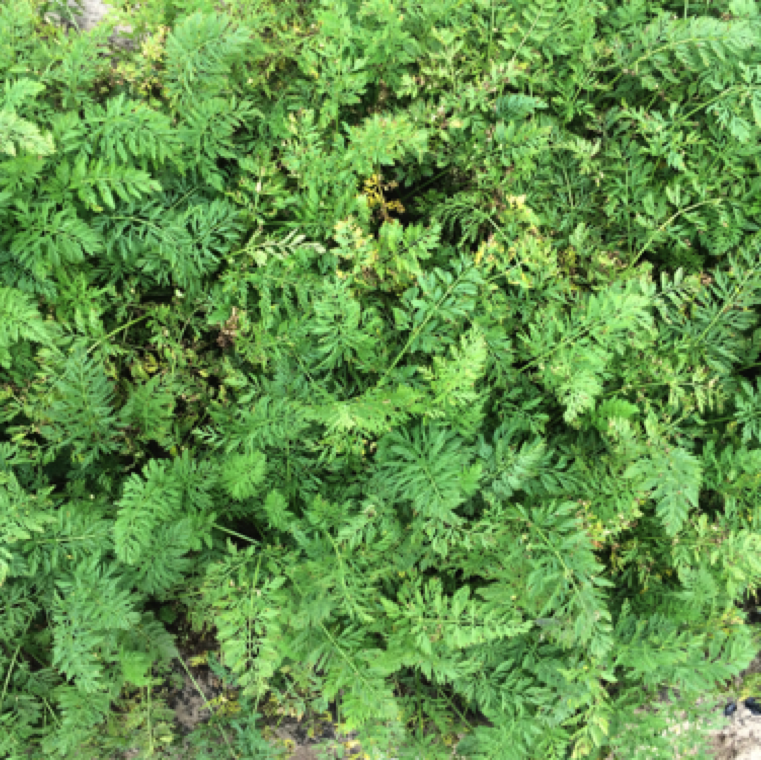
Progressive yellowing can be seen in sections of multiple plants. This symptom can be similar to early stage of diseases including southern blight and cottony rot. Hence checking inside the canopy is critical for confirmation.
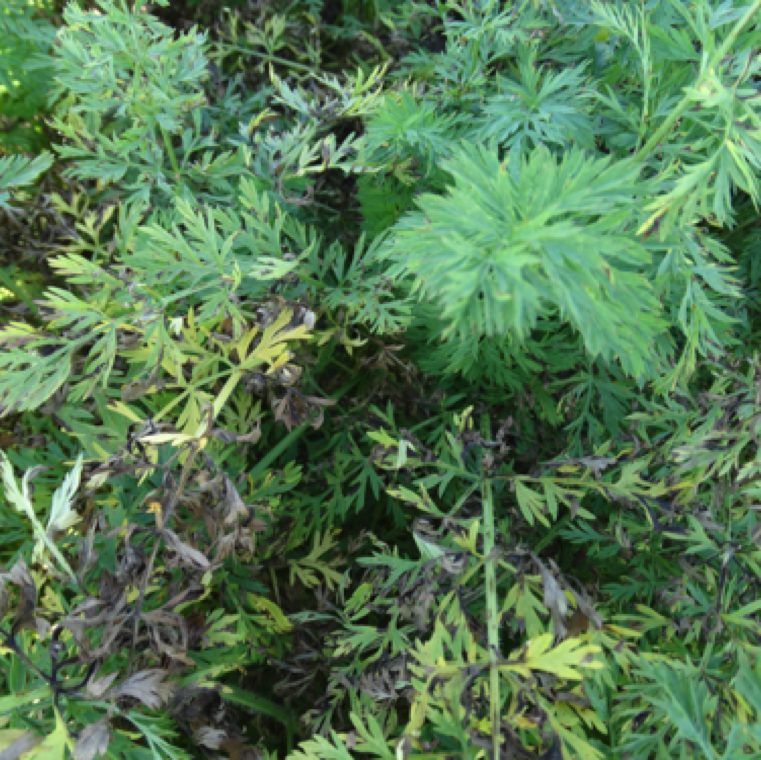
Alternaria leaf blight lesions can enlarge, merge and cause blighting of large sections of the leaves. Lesions can be also seen on petioles of infected plants.
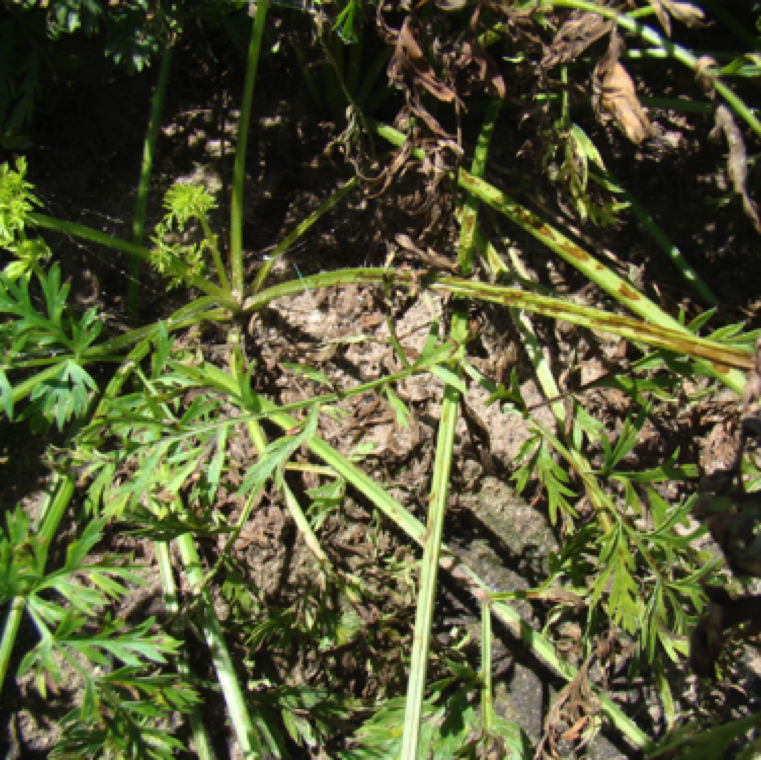
Severe loss of older leaves can happen in advanced stage of the disease. The petiole lesions are elongated and may be light or dark brown or black in color and can extend throughout the plant.
ALTERNARIA LEAF BLIGHT
Fungal causal agent: Alternaria (dauci, alternata)
Carrot diseases
